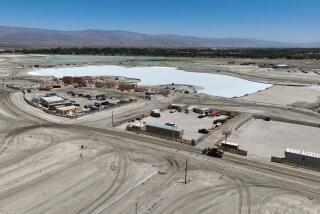Ready to step out of the shadows
- Share via
Del Rey is one of those communities with an identity so fuzzy that few know where it is without the words “adjacent to” attached. But for affordable Westside living, it’s hard to beat this neighborhood a mile from the sea.
Beginnings
In 1906, the San Francisco earthquake devastated the homes of roughly 10,000 Japanese Americans and prompted many of its victims to move to what were then the agricultural areas and presumed seismic safety of West Adams, Boyle Heights and downtown L.A. By 1915, residential pressures had pushed farming west to areas including Del Rey. By 1929, the region became widely renowned for its celery, and the Del Rey Celery Assn. was formed.
Despite its agricultural success, the outbreak of World War II forever changed Del Rey’s landscape. As Japanese families were taken to internment camps after the signing of Administrative Proclamation No. 9066, which ordered the evacuation of more than 110,000 people of Japanese ancestry from the West Coast, Del Rey’s celery industry quickly diminished.
During the postwar boom, the Army Corps of Engineers developed Del Rey’s farmland into a planned community that attracted war veterans and Japanese Americans returning from internment. Between the 1950s and the 1980s, the nearby Howard Hughes tool and die company, laboratory and airport facility employed a large number of Del Rey residents.
Today, Del Rey is home to about 34,000 residents, including those living in Mar Vista Gardens. Mar Vista Gardens is a subsidized low-income housing project with 62 buildings and 601 apartments and is operated by the Housing Authority of the city of Los Angeles.
The Westside community is bounded, roughly, by Washington Boulevard to the north, Lincoln Boulevard to the west, Jefferson Boulevard to the south and Culver City to the east.
What it’s about
Although it has a name and can be found on a map, its multiple ZIP Codes and proximity to better-known places such as Culver City, Marina del Rey, Playa Vista and Mar Vista have obscured its identity.
Unhappy that Del Rey frequently gets swallowed up by its neighbors -- leaving it identified as “Culver City adjacent” or “Marina del Rey adjacent” -- residents have been trying to establish its separate presence on the Westside.
“People have gotten away with calling Del Rey all kinds of things, even though it has been Del Rey all along,” said Steve Knight, president of the Del Rey Neighborhood Council and a Del Rey resident since 1951. “In essence, we’re still searching for an identity.”
“When you think about the Del Rey community, it’s peaceful, if not cohesive. It’s a successful blend of some very distinct enclaves,” said Chris Nevil, president of the Del Rey Homeowners Assn. and an 18-year resident.
Good news, bad news
Del Rey is just a mile from the beach and many residents enjoy outings along the Ballona Creek bicycle path, a six-mile stretch that starts at National Boulevard in Culver City and ends at Marina del Rey’s waterfront.
Living in Del Rey has its perks, but there are drawbacks too and traffic is definitely one of them. And although the ongoing development of the nearby Playa Vista community will offer more attractions such as retail centers and parks, some Del Rey residents fear the project will worsen traffic congestion.
Housing stock
People who’ve been priced out of other parts of the Westside choose Del Rey because it’s affordable compared with some adjacent areas, said Tim Jarnot, a Realtor from Keller Williams Realty in Brentwood.
Homes are eclectic in style and size but a majority are 1950s-style, single-story California bungalows.
On the market now is a 1,251-square-foot, single-story home priced at $549,000. Built in 1941, the home has three bedrooms and one bathroom.
A 1,648-square-foot, two-story home listed for $849,000 has five bedrooms and two bathrooms.
Report card
Del Rey is served by the L.A. Unified School District. Children from kindergarten through sixth grade attend Playa del Rey Elementary School, which scored 785 out of a possible 1,000 on the 2006 Academic Performance Index Growth Report. Marina del Rey Middle School scored 667, and Venice Senior High School scored 665.
Sources: www.cde.ca.gov; www.delreyhome.org; www.vjcc.com.
More to Read
Sign up for Essential California
The most important California stories and recommendations in your inbox every morning.
You may occasionally receive promotional content from the Los Angeles Times.













